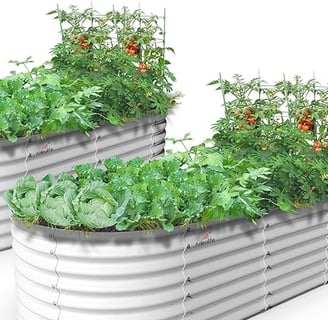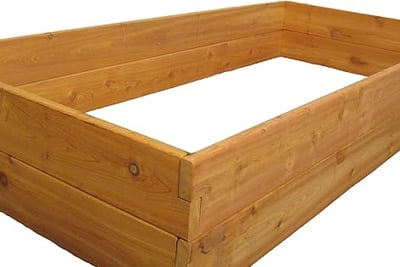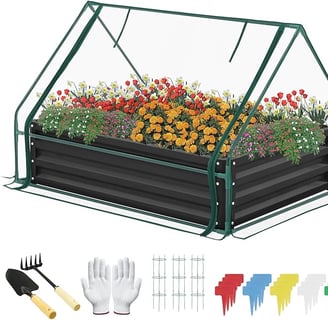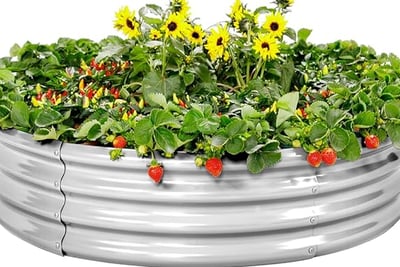How to Build a Raised Garden Bed on a Budget
5 min read


Understanding the Benefits of Raised Garden Beds
Raised garden beds have gained popularity among gardeners, especially those operating within budget constraints. One of the primary advantages of these structures is their ability to improve soil drainage. When soil is elevated, excess water can drain away more effectively, reducing the risk of root rot and other moisture-related issues. This controlled drainage environment can be particularly beneficial in areas prone to heavy rainfall or poor soil conditions, thus allowing gardeners to cultivate a wider variety of plants successfully.
Another significant benefit is enhanced accessibility. Raised garden beds can alleviate the strain on backs and knees as they eliminate the need to bend down or kneel on the ground while planting or maintaining crops. For those with mobility challenges or who spend a considerable amount of time in the garden, these beds can offer a more comfortable gardening experience. The height of the beds can be adjusted according to the gardener's requirements, making it easier to reach plants without overexertion.
Furthermore, raised beds grant gardeners improved control over growing conditions. By filling them with a custom soil mix, individuals can tailor the soil composition to suit specific plants, optimizing nutrient availability and fostering healthier growth. This tailored approach is particularly advantageous in regions with poor native soil, as it allows for a greater variety of plant species to thrive. Additionally, raised beds can extend the growing season by warming up faster in the spring, thus allowing for earlier planting and potentially increased yields.
Beyond functionality, raised garden beds also contribute to the aesthetic appeal of outdoor spaces. They can transform a modest garden area into a visually striking landscape by adding structure and organization. With various materials and designs available, these beds can complement the overall garden theme while creating a more inviting and productive environment. Overall, the benefits of raised garden beds are numerous, making them an excellent choice for budget-conscious gardeners looking to enhance their gardening experience.
Materials Needed for Cost-Effective Raised Garden Beds
When creating raised garden beds on a budget, selecting the right materials can significantly affect both cost and sustainability. A variety of budget-friendly options exist, allowing gardeners to build functional and attractive beds without breaking the bank. One highly recommended choice for those seeking affordability is reclaimed wood. This option not only offers a rustic charm but also minimizes waste by repurposing materials. Local construction sites, neighborhood renovations, or online marketplaces often yield easily accessible reclaimed wood.
Cinder blocks are another economical and durable choice for raised beds. They are widely available at most home improvement stores and can often be purchased second-hand at a reduced price. Cinder blocks are not only cost-efficient but also provide excellent drainage and pest resistance, making them particularly suitable for vegetable and flower gardens. Furthermore, their durability ensures that the raised beds can withstand the test of time, reducing the need for frequent replacements.
Composite materials are yet another viable option worth considering. These materials, often made from recycled plastics and wood fibers, mimic the appearance of wood while offering enhanced longevity and resistance to rot and insects. While initial costs may be higher than other materials, their long lifespan can translate into savings over time.
When sourcing materials, it's essential to consider recycling options. Old pallets can often be obtained at little to no cost from local retailers or warehouses. However, caution should be exercised to ensure that pallets have not been treated with harmful chemicals. Additionally, checking with local community groups or online forums may yield helpful insights on materials being offered for free or at a minimal cost.
Ultimately, prioritizing affordable and sustainable materials, while considering their durability and safety for gardening, is key to successfully constructing raised garden beds on a budget. By being resourceful and mindful of costs, gardeners can create enriching spaces for growing plants without excessive expenditure.
Step-by-Step Guide to Building a Raised Garden Bed
Constructing a raised garden bed can be an enjoyable and fulfilling project, providing a productive space for growing plants while adhering to budget constraints. The first step in this process is to choose a location that receives adequate sunlight, typically six to eight hours daily. Once a suitable spot is identified, measure the area. A standard size for a raised garden bed is 4 feet by 8 feet, but dimensions can be adjusted based on available space and personal preference.
Next, gather materials necessary for the construction. Common options include untreated wood, concrete blocks, or recycled materials, ensuring they are safe for planting. Untreated wood is often preferred due to its cost-effectiveness and aesthetic appeal, though one should be cautious of using pressure-treated lumber due to potential chemicals leaching into the soil. Once materials are secured, use a saw to cut the boards to the desired length and width.
After preparing the necessary components, start assembling the frame. Connect the corners using screws or wood brackets to enhance stability. If desired, add a bottom layer of landscaping fabric within the box to prevent weeds while allowing water drainage. This step is critical in ensuring the longevity of the raised garden bed structure. Following assembly, position the bed in your chosen location, securing it level on the ground.
With the frame in place, it’s time to fill the bed with soil. A blend of topsoil, compost, and mulch is often recommended for optimal nutrient-rich growth. This mixture promotes good drainage and aeration, benefitting plant development. Additionally, consider installing a liner, such as landscape fabric or plastic sheeting, on the sides of the bed to further enhance durability and prevent soil erosion. With these steps completed, your budget-friendly raised garden bed is ready for planting, enabling the joy of gardening without overspending.
Budget-Friendly Premade Options for Small Gardens
For gardening enthusiasts with limited time or DIY skills, premade raised garden beds offer a practical solution while remaining budget-friendly. These kits come in various sizes and materials, making them suitable for small gardens and ensuring accessibility for novice gardeners. Among the popular choices available are wooden, metal, and composite styles, each catering to different aesthetic preferences and gardening needs.
When selecting the right premade option, consider factors such as versatility, longevity, and maintenance. Choosing a raised garden bed that allows for easy access and features a modular design can enhance your gardening experience, making it a joy rather than a chore. Ultimately, even those with small gardens can cultivate flourishing plants through these budget-friendly premade solutions, illustrating that cost-effective gardening options truly exist for every aspiring gardener.











